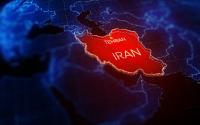Independent, 4 November 2001
Last month the only television channel allowed to report from Taliban territory in Afghanistan, Qatar's al-Jazeera station, said air strikes had killed 93 civilians in the village of Chowkar-Karez, 25 miles north of Kandahar, according to Taliban sources.
Three days later the Pentagon said it did not know what had caused the deaths and refused to take any blame. "We can usually spot bomb craters near things," said the chairman of the joint chiefs of staff, General Richard Myers. "And when we make a mistake, we tell you when we make a mistake."
On Friday, the Pentagon finally admitted one of its gunships had fired on the village, but insisted it was a legitimate target. Journalists and human rights advocates who interviewed eyewitnesses estimated 25 to 35 civilians were killed, that several planes were involved and that there was no military target in the area.
We all know truth is the first casualty of war. But which side in this conflict is the bigger liar? To hear the Taliban leadership tell it, US air strikes on Afghanistan are raining terror on civilian populations as bombs strike hospitals, villages and food warehouses. Up to 1,500 civilians have been killed and many more injured.
From the Pentagon point of view, by contrast, the strikes have been planned with unprecedented surgical care. The vast majority of bombs have struck their targets cleanly and accurately, and if a handful have gone astray it is a regrettable but necessary part of fighting a war. The Pentagon has no casualty numbers, but the Taliban claims are surely exaggerated.
This is an unequal struggle, in propaganda as in everything else. The Taliban say only what they choose to say, and do not have to worry about a free press. The Pentagon, on the other hand, is forced to account for its activities in daily briefings, making it much the easier party to catch out sooner or later.
Claim and counter-claim
Red Crescent hospital, Kandahar
What the Taliban said: A pre-dawn raid on 31 October killed 11 people at the hospital.
What the Pentagon said: The strike missed both the hospital and another Red Crescent building nearby. "It was a legitimate terrorist target, intentionally struck."
What we now know: Journalists later saw a large crater in the centre of the clinic, and hospital vehicles crushed by fallen masonry. One doctor reported 15 dead and 25 seriously injured; the numbers could not be verified.
US ground troops
The Taliban: Claim they shot down two US helicopters during 20 October special forces raid, and have taken a number of US prisoners.
The Pentagon: Defence Secretary Donald Rumsfeld said both claims were false.
What we now know: Despite suggestions of a clean assault, it has emerged that special forces met unexpectedly strong resistance. One helicopter took off in such a hurry it hit a wall and lost its landing gear, later shown off to substantiate Taliban claims. No independent evidence of US prisoners has emerged.
Red Cross warehouse, Kabul
The Taliban: US planes have hit a food warehouse twice, once on 16 October and once about 10 days later.
The Pentagon: Rumsfeld said first raid hit its intended target, "a building we had been told was a Taliban warehouse. It turns out it may have had some Red Cross activity in it."
What we now know: General Richard Myers said the second strike "should not have happened". He added that the Taliban "use food as a weapon".
Herat military hospital or veterans' home
The Taliban: US bombs killed more than 100 people at a hospital in Herat.
The Pentagon: "We have absolutely no evidence at all that would suggest that is correct," said Rumsfeld.
What we now know: The next day spokeswoman Torie Clarke said a 1,000lb bomb had gone astray and exploded in a field near an old people's home. She expressed regret for any loss of life, but gave no numbers. It is still not clear what was hit or how many were killed.
Karam village, near Jalalabad
The Taliban: Claimed 200 people killed by US bombs.
The Pentagon: Rumsfeld says US jets hit underground caves stuffed with ammunition; the ammunition exploded, causing fires that raged for up to four hours; any civilian casualties were therefore inflicted by the caves, not US bombs.
What we now know: Foreign journalists saw giant craters in the village, suggesting more than a cave fire, and plenty of fresh graves.






